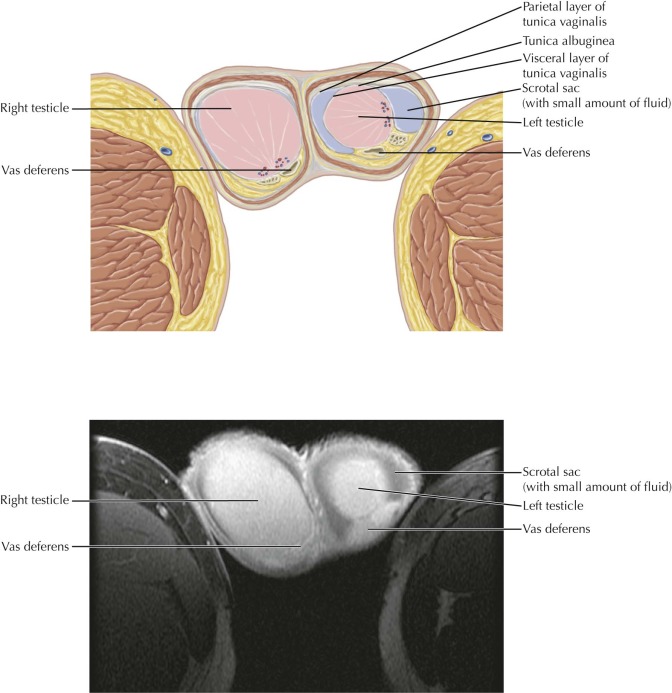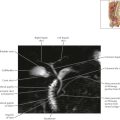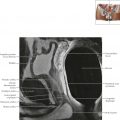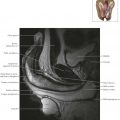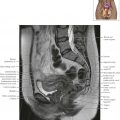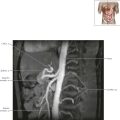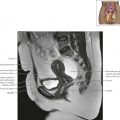Scrotum and Testes Axial 2
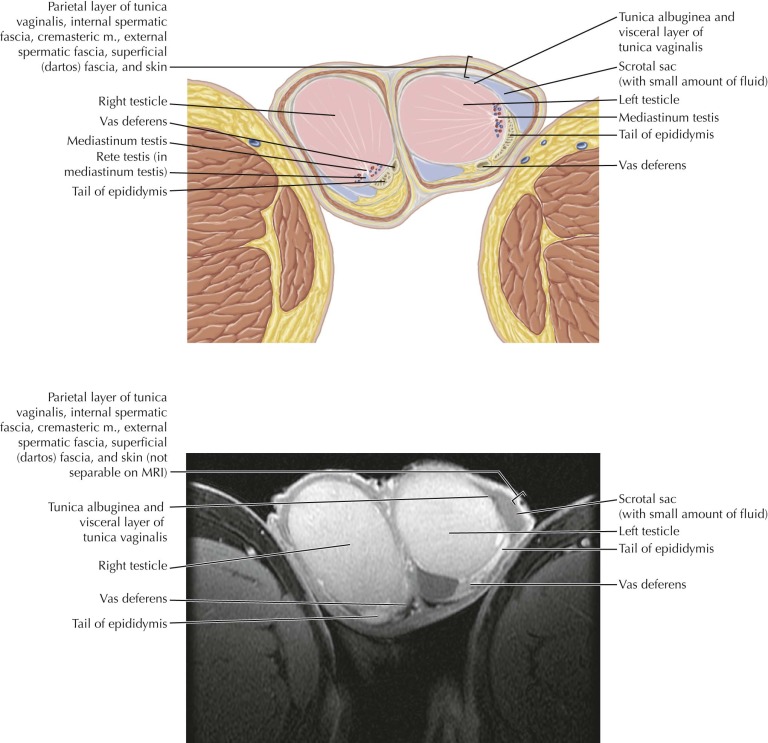
Normal anatomy
The testicles are composed of densely packed seminiferous tubules that converge posteriorly into larger ducts and drain into the rete testis at the testicular hilum. The mediastinum testis appears as a linear band of low signal intensity at the testicular hilum, where the ducts, nerves, and vessels enter and exit the testicle, while the rete testis has high signal intensity on T2-weighted MR images. It is important to be aware of the normal appearance and location of the mediastinum testis and rete testis so that these structures are not mistaken for pathology.

Scrotum and Testes Axial 6




